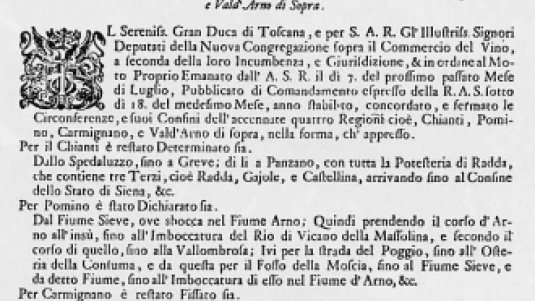‘Racial Purity’

The title is obviously meant to be provocative and in no way has anything to do with the abominable theories which were professed and practiced by dangerous criminal groups in our recent past. My I am dealing with here has to do with the world of wine and a tendency, which I believe may be inconscious, that leads many beginners to believe that the genetic aspect, in other words the grape, is more important and absolutely decisive in the defense of wine making traditions.
Such positions are often and above all found in Italy and have led to and continue to lead to infinite and sometimes even superficial and anti-historic 'feuds'. In the end by defending to the bitter end concepts which are more ideological than real, the true tradition gets overlooked and subjected to even significant modification without anyone realizing this.
The idea that wines like Barolo, Barbaresco and Brunello di Montalcino were traditionally made purely from single grapes is historically untrue. Together with Nebbiolo and Sangiovese, which today must make up 100% of these wines, producers always used other grapes, Barbera in the Langhe, Lanaiolo and Colorino in Tuscany, for as much as 10%. This until the 1980s law regulating DOCG designation. For sure we are dealing with traditional grapes, not Merlot or worse Cabernet Sauvignon which with their pyrazine content could alter the organoleptic character of these wines. But for me what is more important is the principle that grape varieties that are traditionally present in the vineyards should allowed to be blended into these wines.
Carmignano, for example, is not only itself a DOCG wine but it has been around much longer than the above mentioned grapes, while the deprecated Cabernet Sauvignon has been present for at least three centuries. In the famous ordinance of the Grand Duke of Tuscany Cosimo III de' Medici, dated 1716, the Tuscan wines worthy of being protected by an 'ante litteram' domination were Pomino, Valdarno di Sopra, Chianti – which at the time was an historic Chianti and produced only in the municipalities of Radda, Castellina and Gaiole – and, in fact, Carmignano. And Cabernet was already there, too, having been planted in the Medici family vineyards in Artimino years before.
Thus with the same fervor that one today defends tradition we should also support the absolute necessity of keeping Cabernet Sauvignon in Carmignano vineyards and, I might add, also other varieties, perhaps even Pinot Noir in Pomino, as well as all the minor grapes which have always been present in vineyards producing Barolo, Barbaresco and Brunello di Montalcino.
This would be a secular interpretation of Tuscan tradition, and could serve as a defense of Sangiovese in other areas. And above all it would give a cultural value that would go beyond present day polemics and the defense of a wine's 'racial purity' which has nothing to do with historic reality.

 Italiano
Italiano







